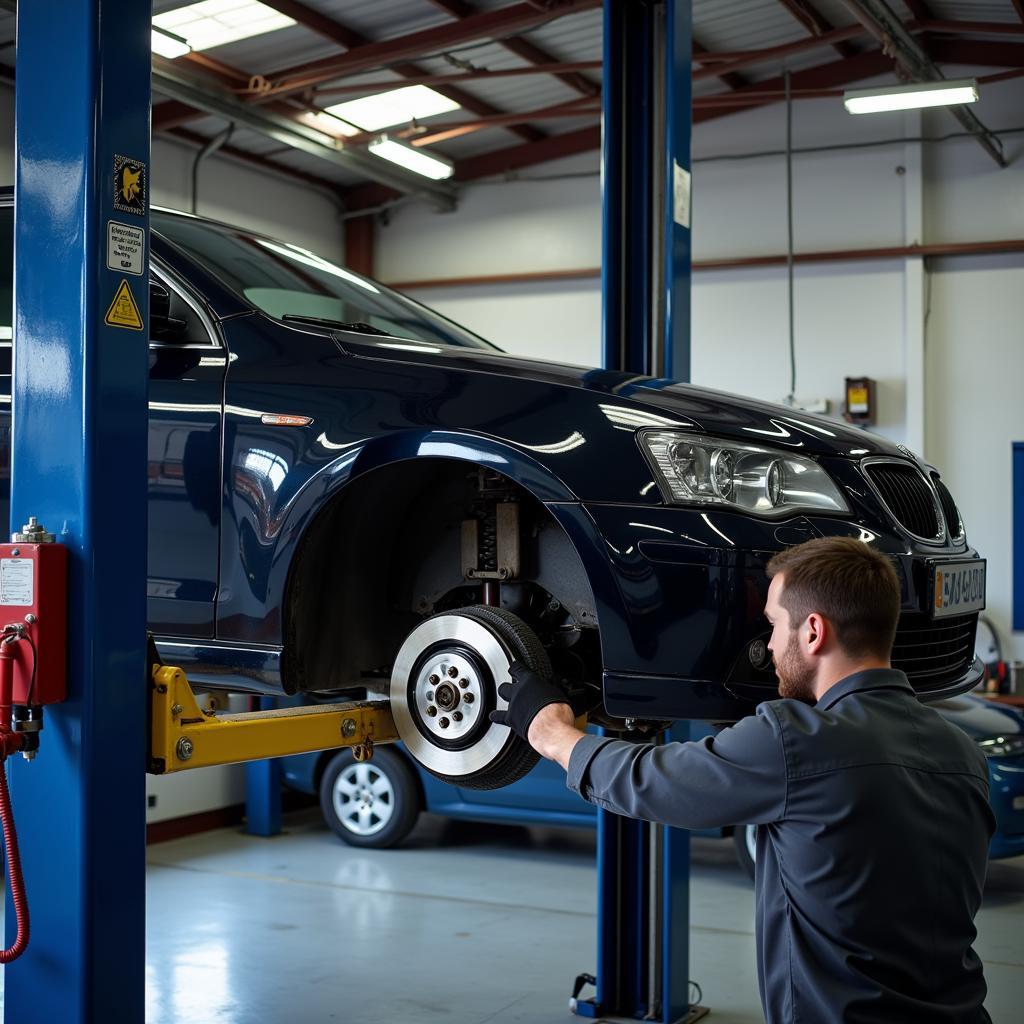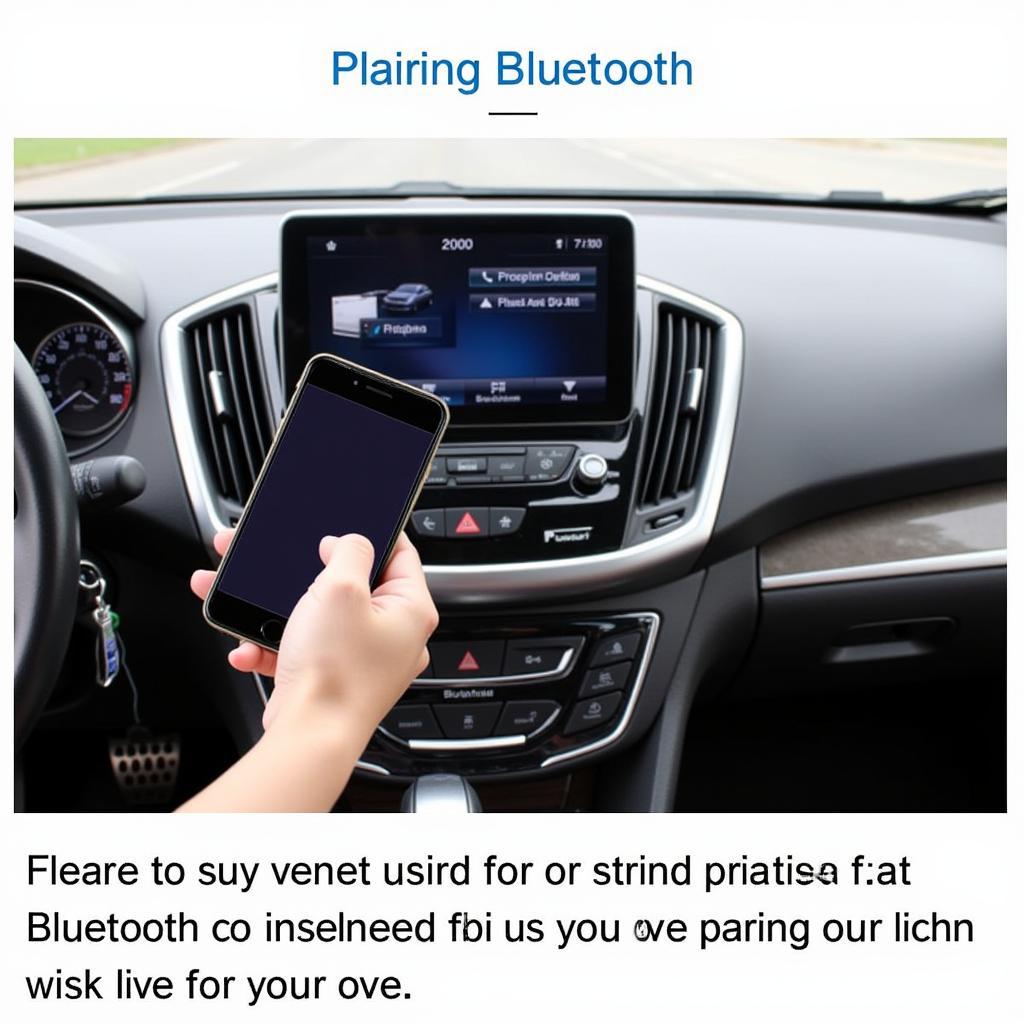It’s a pretty unnerving feeling when your brake warning light stays on, especially when you’re about to drive. You might be thinking, “Is my car safe to drive? What’s wrong?” This article will explain the most common reasons why your brake warning light is on and what you can do about it.
Understanding the Brake Warning Light
Your brake warning light is designed to alert you to potential problems with your braking system. It’s important to take it seriously, as braking issues can pose a serious safety risk. Here’s a breakdown of why the brake warning light might stay on:
Common Causes of a Persistent Brake Warning Light
1. Low Brake Fluid
This is the most frequent reason for the brake warning light to come on. Brake fluid is essential for proper braking function. When the fluid level falls below a certain point, the light will illuminate. It’s crucial to top off the brake fluid reservoir as soon as possible.
“If your brake warning light is on due to low brake fluid, it’s essential to address the issue promptly,” says John Doe, a certified automotive technician with over 15 years of experience. “Ignoring it can lead to brake failure, putting you and others at risk.”
Here’s what to do:
- Check the brake fluid level: The reservoir is usually located under the hood, clearly labeled.
- Add fluid if needed: Be sure to use the correct type of brake fluid for your vehicle. Consult your owner’s manual for the recommended type.
- Inspect for leaks: If the fluid level drops frequently, you may have a leak. Inspect the brake lines, calipers, and master cylinder for any signs of leakage.
2. Faulty Brake Pad or Shoe Sensor
Modern brake pads and shoes are equipped with wear sensors that trigger the warning light when they reach a critical wear level. When the sensor wears down, it makes contact with the rotor or drum, completing an electrical circuit and activating the light.
Here’s what to do:
- Inspect the brake pads and shoes: You can do a visual inspection yourself, or take your car to a mechanic for a professional evaluation.
- Replace worn-out pads and shoes: This is essential for maintaining proper braking performance and preventing further damage to the brake system.
3. Problems with the Electronic Brake System (ABS or Electronic Stability Control)
The ABS (Anti-lock Braking System) and Electronic Stability Control (ESC) systems use sensors and actuators to prevent wheel lock-up and maintain vehicle stability during braking. If these components malfunction, the brake warning light may come on.
Here’s what to do:
- Have the ABS/ESC system diagnosed: This can be done by a qualified mechanic using a diagnostic tool.
- Repair or replace any faulty components: This may involve replacing sensors, actuators, or control modules.
4. Parking Brake Engaged
Sometimes, the brake warning light comes on when the parking brake is engaged. This is typically a simple fix.
Here’s what to do:
- Release the parking brake: Ensure that the parking brake lever is completely disengaged.
- Check the brake light: If the warning light remains on, there may be a more serious issue.
5. Other Possible Causes
While the causes listed above are the most common, other factors can also trigger the brake warning light:
- Faulty Brake Light Bulb: A burnt-out brake light bulb could trigger the light.
- Low Battery Voltage: A low battery could affect the brake system’s electrical components and trigger the warning light.
- Loose Electrical Connections: Loose connections in the braking system can cause intermittent problems and trigger the warning light.
Here’s what to do:
- Have your car inspected: It’s best to take your car to a mechanic to diagnose the problem.
What to Do When the Brake Warning Light Is On
It’s always a good idea to address the problem as soon as possible.
- Don’t ignore the light: This is a serious issue, and it’s important to get it checked out right away.
- Drive cautiously: Avoid heavy braking and avoid driving at high speeds.
- Have your car inspected by a qualified mechanic: They can diagnose the problem and provide the necessary repairs.
Conclusion
A brake warning light is a serious indication of a potential problem with your braking system. It’s essential to address the issue promptly to prevent further damage and ensure your safety on the road. Remember to check your brake fluid, inspect your brake pads and shoes, and have your ABS/ESC system diagnosed if necessary. By taking these steps, you can maintain the health of your braking system and prevent potentially dangerous situations.
FAQ
Q: Is it safe to drive with the brake warning light on?
A: It is generally not safe to drive with the brake warning light on, as it indicates a potential problem with the braking system. However, if you have low brake fluid and can safely top it off, you may be able to drive a short distance to a repair shop.
Q: How much does it cost to fix a brake warning light?
A: The cost of repairing a brake warning light can vary widely depending on the cause of the problem. It could be as simple as topping off the brake fluid, or it could involve replacing brake pads, shoes, or other components.
Q: How often should I check my brake fluid?
A: It’s a good idea to check your brake fluid level at least once a month, or more often if you notice any signs of a leak.
Q: What happens if I ignore the brake warning light?
A: Ignoring the brake warning light can lead to a serious brake failure, which could result in an accident.


